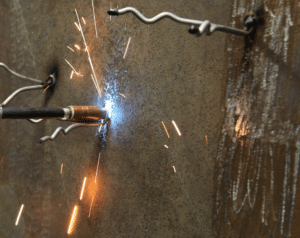
This innovative method involves the use of an advanced welding process that combines both traditional arc welding and laser beam welding. The result is a highly efficient and durable bond that withstands extreme heat and mechanical stress.
In this article, we will explore the intricacies of the TIMIG Fusion technique, its benefits, and its applications in various industries. So, let’s dive into the world of refractory anchor welding and discover the power of the TIMIG Fusion method.
The TIMIG Fusion technique offers a multitude of benefits when it comes to refractory anchor welding. One of the key advantages is its ability to create a strong and durable bond between the refractory material and the anchor. The combination of arc welding and laser beam welding ensures a precise and uniform fusion, resulting in a bond that can withstand high temperatures and mechanical stress.
Additionally, the TIMIG Fusion method allows for increased productivity and efficiency in the welding process. The use of laser technology enables faster welding speeds and higher deposition rates, saving valuable time and resources. This makes it an ideal choice for industries where time is of the essence, such as steel manufacturing and petrochemical plants.
Furthermore, the TIMIG Fusion technique provides enhanced control and accuracy during the welding process. The laser beam allows for precise heat input and focal point control, ensuring consistent penetration and avoiding any structural damage to the refractory material.
The TIMIG Fusion technique for refractory anchor welding has proven to be highly versatile and effective in a wide range of industries. Its unique combination of arc welding and laser technology makes it a valuable tool for various applications.
In the steel manufacturing industry, TIMIG Fusion is used for welding refractory anchors in the lining of blast furnaces and steel ladles. The strong bond created by this technique ensures the refractory lining remains intact under extreme temperatures and mechanical stress.
In petrochemical plants, TIMIG Fusion is utilized for anchor welding in boilers, furnaces, and reactors. The precise heat input and focal point control provided by the laser beam ensure the anchors are securely welded, minimizing the risk of failure and enhancing safety.
Moreover, the TIMIG Fusion technique finds application in cement plants, power plants, and pulp and paper mills, among others. Its ability to create a durable bond between refractory materials and anchors makes it an essential tool for maintaining the integrity of various industrial structures.
The TIMIG Fusion technique for welding refractory anchors has proven to be highly versatile and effective in a wide range of industries. Its unique technique of arc welding and laser technology makes it a valuable tool for a multitude of applications. Increased productivity and efficiency, along with enhanced precision and control, are a few of the benefits the TIMIG Fusion technique offers. It is a game-changer for sure!
Contact RAI, the refractory anchor experts for more information on the TiMig Fusion technique.